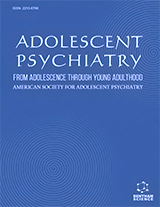Abstract
Autism, a neurodevelopment disorder that was regarded as insignificant in the past is thereby now recognized as a major problem with an increasing prevalence over the past 50 years affecting 1 out of every 160 children worldwide. Recent accumulating evidence indicates that autism is a consequence of the fusion of environmental, genetic, and epigenetic components. Due to the lack of effective pharmacotherapy, alternative approaches are being explored for their beneficial effect on autistic symptoms. A literature review was performed identifying previously published clinical studies that were set up as an alternative therapy for alleviating the symptoms of autism. The data were collected from PubMed and Google Scholar databases. A total of 13 kinds of interventions including video modelling, play therapy, music therapy, yoga, social skills training, sensory integration (SIT), scalp acupuncture, medical clowning, animal-assisted activity, theatre-based intervention, Tai Chu Chuan training, novel mattress technology, and magnetic resonance imaging were found to be affecting the symptoms associated with autism. From sufficient clinical evidence, it was estimated that alternative approaches such as music therapy and play therapy have the most beneficial effect in mitigating the symptoms to an extent.
Graphical Abstract
[PMID: 4880460]
[http://dx.doi.org/10.4062/biomolther.2016.061] [PMID: 27133257]
[http://dx.doi.org/10.1017/S1092852916000262] [PMID: 27364515]
[http://dx.doi.org/10.1542/peds.2007-2361]
[http://dx.doi.org/10.9758/cpn.2018.16.2.129] [PMID: 29739125]
[http://dx.doi.org/10.2217/bmm.11.13] [PMID: 21473722]
[http://dx.doi.org/10.1093/pch/pxz117] [PMID: 31660042]
[http://dx.doi.org/10.1177/1362361311408932] [PMID: 21610187]
[http://dx.doi.org/10.4103/0019-5545.117131] [PMID: 24082241]
[http://dx.doi.org/10.1007/s00787-013-0375-0] [PMID: 23322184]
[http://dx.doi.org/10.1177/1362361311402857] [PMID: 21690082]
[http://dx.doi.org/10.1097/00004583-200405000-00008] [PMID: 15100561]
[http://dx.doi.org/10.2174/2666082215666191111121115]
[http://dx.doi.org/10.1016/j.neubiorev.2009.06.006] [PMID: 19559043]
[http://dx.doi.org/10.1136/jmg.37.7.489] [PMID: 10882750]
[http://dx.doi.org/10.1016/j.ijdevneu.2004.06.007] [PMID: 15749246]
[http://dx.doi.org/10.1016/j.bbi.2012.01.011] [PMID: 22310922]
[http://dx.doi.org/10.1097/DBP.0000000000000126] [PMID: 25629966]
[http://dx.doi.org/10.1016/j.bbi.2014.09.001] [PMID: 25218900]
[http://dx.doi.org/10.1007/s10803-012-1540-x] [PMID: 22562209]
[http://dx.doi.org/10.1023/A:1025023131029] [PMID: 12959425]
[http://dx.doi.org/10.1289/ehp.1307044] [PMID: 24954055]
[http://dx.doi.org/10.1007/s11910-009-0029-2] [PMID: 19348707]
[http://dx.doi.org/10.1016/j.tips.2012.09.004] [PMID: 23084458]
[http://dx.doi.org/10.1038/13810] [PMID: 10508514]
[PMID: 15389703]
[http://dx.doi.org/10.1016/j.bbi.2010.08.003] [PMID: 20705131]
[http://dx.doi.org/10.1155/2016/3597209] [PMID: 27840741]
[http://dx.doi.org/10.1002/ajmg.b.30366] [PMID: 16917939]
[http://dx.doi.org/10.1093/ajcn/80.6.1611] [PMID: 15585776]
[http://dx.doi.org/10.1038/tp.2012.61] [PMID: 22781167]
[http://dx.doi.org/10.1155/2012/986519] [PMID: 22928106]
[http://dx.doi.org/10.3945/ajcn.2008.26615] [PMID: 19056591]
[http://dx.doi.org/10.1096/fj.08-128926] [PMID: 19307255]
[http://dx.doi.org/10.1371/journal.pone.0066418] [PMID: 23840462]
[http://dx.doi.org/10.1016/S0009-8981(03)00119-0] [PMID: 12691871]
[http://dx.doi.org/10.1007/s00406-004-0456-7] [PMID: 15205966]
[http://dx.doi.org/10.1016/j.lfs.2004.04.038] [PMID: 15363659]
[http://dx.doi.org/10.1179/1351000211Y.0000000012] [PMID: 22005342]
[http://dx.doi.org/10.1186/2040-2392-4-2] [PMID: 23347615]
[http://dx.doi.org/10.1038/tp.2012.143] [PMID: 23340503]
[http://dx.doi.org/10.1016/j.neuron.2014.07.040] [PMID: 25155956]
[http://dx.doi.org/10.1038/ncomms7014] [PMID: 25625889]
[http://dx.doi.org/10.1038/mp.2016.103] [PMID: 27400854]
[http://dx.doi.org/10.1016/j.neulet.2018.02.003] [PMID: 29421544]
[http://dx.doi.org/10.3390/nu11030521] [PMID: 30823414]
[PMID: 24670961]
[http://dx.doi.org/10.1001/jamapediatrics.2014.210] [PMID: 24911948]
[http://dx.doi.org/10.1037/a0028353] [PMID: 22545843]
[http://dx.doi.org/10.1016/S0006-3223(97)00439-3] [PMID: 9513736]
[http://dx.doi.org/10.1126/science.294.5540.34] [PMID: 11588233]
[http://dx.doi.org/10.1097/YCO.0000000000000132] [PMID: 25602248]
[http://dx.doi.org/10.1016/j.ridd.2004.12.002] [PMID: 15919178]
[http://dx.doi.org/10.1542/peds.2012-0900E] [PMID: 23118257]
[http://dx.doi.org/10.1155/2015/258589] [PMID: 26064157]
[http://dx.doi.org/10.1353/etc.0.0104]
[http://dx.doi.org/10.1023/A:1005635326276] [PMID: 11261466]
[http://dx.doi.org/10.1007/s10882-014-9416-y]
[http://dx.doi.org/10.1353/etc.0.0097]
[http://dx.doi.org/10.1177/1098300714548800]
[http://dx.doi.org/10.1177/1088357611428426]
[http://dx.doi.org/10.1007/s10803-014-2072-3] [PMID: 24573335]
[http://dx.doi.org/10.1177/10983007030050010801]
[http://dx.doi.org/10.1002/bin.197]
[http://dx.doi.org/10.1002/bin.1406]
[http://dx.doi.org/10.1353/etc.0.0100]
[http://dx.doi.org/10.1901/jaba.2009.42-43] [PMID: 19721729]
[http://dx.doi.org/10.1177/10983007060080020201]
[http://dx.doi.org/10.1901/jaba.1977.10-349] [PMID: 16795561]
[http://dx.doi.org/10.1007/s10803-018-3527-8] [PMID: 29516338]
[http://dx.doi.org/10.1007/s10803-018-3719-2] [PMID: 30136112]
[http://dx.doi.org/10.1109/TNSRE.2016.2613879] [PMID: 28114071]
[PMID: 21103141]
[http://dx.doi.org/10.1176/appi.psychotherapy.2001.55.2.251] [PMID: 11467260]
[http://dx.doi.org/10.1037/0735-7028.33.6.523]
[http://dx.doi.org/10.1007/978-1-4757-9038-2_3]
[http://dx.doi.org/10.1037/0735-7028.33.6.529]
[http://dx.doi.org/10.1093/jmt/thv005] [PMID: 26019303]
[http://dx.doi.org/10.1002/14651858.CD004381.pub3] [PMID: 24936966]
[http://dx.doi.org/10.1093/jmt/48.2.169] [PMID: 21938891]
[http://dx.doi.org/10.1080/08098130509478134]
[http://dx.doi.org/10.1136/jech.2010.113571] [PMID: 21609946]
[http://dx.doi.org/10.5014/ajot.59.6.653] [PMID: 16363186]
[http://dx.doi.org/10.1016/j.ctcp.2010.09.007] [PMID: 21168106]
[PMID: 16437509]
[http://dx.doi.org/10.1155/2011/659876] [PMID: 21437197]
[http://dx.doi.org/10.1016/j.jad.2011.04.051] [PMID: 21620478]
[http://dx.doi.org/10.3109/09638288.2010.509458] [PMID: 20718623]
[PMID: 21614942]
[http://dx.doi.org/10.17761/ijyt.20.1.eu176u2721423510]
[http://dx.doi.org/10.1097/PEP.0b013e31815f1208] [PMID: 18300936]
[http://dx.doi.org/10.1177/1359104504046155]
[http://dx.doi.org/10.17761/ijyt.12.1.r978vxt214683904]
[http://dx.doi.org/10.1016/j.explore.2009.03.026]
[http://dx.doi.org/10.1080/02796015.2005.12086295]
[http://dx.doi.org/10.1111/j.1365-2788.1989.tb01496.x] [PMID: 2795647]
[http://dx.doi.org/10.4172/2165-7890.1000155]
[http://dx.doi.org/10.1016/j.ctcp.2017.05.001] [PMID: 28779937]
[http://dx.doi.org/10.1177/1362361320974841] [PMID: 33238718]
[http://dx.doi.org/10.1007/s10803-014-2351-z] [PMID: 25578338]
[http://dx.doi.org/10.1080/02796015.2012.12087516]
[http://dx.doi.org/10.1002/pits.21749]
[http://dx.doi.org/10.1016/j.rasd.2015.05.005] [PMID: 26161136]
[http://dx.doi.org/10.1007/s10803-019-03892-7] [PMID: 30701435]
[http://dx.doi.org/10.1371/journal.pone.0103038] [PMID: 25075609]
[http://dx.doi.org/10.1007/s10803-006-0218-7] [PMID: 17016677]
[http://dx.doi.org/10.5014/ajot.61.2.190] [PMID: 17436841]
[http://dx.doi.org/10.1023/A:1020541906063] [PMID: 12463517]
[http://dx.doi.org/10.1177/030802260907200902]
[http://dx.doi.org/10.1007/s10803-014-2066-1] [PMID: 24577786]
[http://dx.doi.org/10.1177/1362361313517762] [PMID: 24477447]
[http://dx.doi.org/10.1177/1362361311435157] [PMID: 22318118]
[http://dx.doi.org/10.1007/s10803-014-2111-0] [PMID: 24214165]
[http://dx.doi.org/10.5014/ajot.2011.09205] [PMID: 21309374]
[http://dx.doi.org/10.1186/s13063-019-3205-y] [PMID: 30744672]
[http://dx.doi.org/10.1089/acm.2016.0257] [PMID: 28530441]
[http://dx.doi.org/10.1089/acm.2007.0823] [PMID: 18990052]
[http://dx.doi.org/10.1089/acm.2007.0768] [PMID: 20804366]
[http://dx.doi.org/10.1089/acm.2007.0508] [PMID: 18315511]
[http://dx.doi.org/10.1142/S0192415X09007004] [PMID: 19606510]
[http://dx.doi.org/10.1186/s13020-018-0189-6] [PMID: 29983730]
[PMID: 29071983]
[http://dx.doi.org/10.1093/ecam/neq008] [PMID: 21799690]
[http://dx.doi.org/10.1111/j.1460-9592.2008.02903.x] [PMID: 19143948]
[PMID: 29235739]
[http://dx.doi.org/10.1007/s00431-016-2764-0] [PMID: 27605131]
[http://dx.doi.org/10.1371/journal.pone.0175028] [PMID: 28414728]
[http://dx.doi.org/10.2147/JPR.S23199] [PMID: 22003302]
[http://dx.doi.org/10.1007/s00431-016-2821-8] [PMID: 28013377]
[http://dx.doi.org/10.1007/s00431-019-03415-7] [PMID: 31243575]
[http://dx.doi.org/10.1080/15332985.2017.1302037]
[http://dx.doi.org/10.1371/journal.pone.0057010] [PMID: 23468902]
[http://dx.doi.org/10.1177/019394502320555403] [PMID: 12365766]
[http://dx.doi.org/10.1111/j.1548-1352.2010.01085.x]
[http://dx.doi.org/10.1016/S0882-5963(97)80058-9] [PMID: 9420370]
[http://dx.doi.org/10.21071/pbs.v0i1.3994]
[http://dx.doi.org/10.1089/acm.2019.0196] [PMID: 31328957]
[http://dx.doi.org/10.3390/ijms21218290] [PMID: 33167418]
[http://dx.doi.org/10.1007/s10803-017-3322-y] [PMID: 28988366]
[http://dx.doi.org/10.1146/annurev-publhealth-031816-044318] [PMID: 28068486]
[http://dx.doi.org/10.1016/j.cppeds.2018.08.014] [PMID: 30337149]
[http://dx.doi.org/10.1097/WNF.0b013e3182a9339d] [PMID: 24201232]
[http://dx.doi.org/10.1097/WNF.0b013e3182a31ec0] [PMID: 24045605]
[http://dx.doi.org/10.1155/2014/136158] [PMID: 24790986]
[http://dx.doi.org/10.1186/s12887-018-1126-7] [PMID: 29753322]
[PMID: 31416496]
[http://dx.doi.org/10.1007/s10803-020-04580-7] [PMID: 32623539]
[http://dx.doi.org/10.1007/s10803-019-04270-z] [PMID: 31655965]
[http://dx.doi.org/10.1007/s10803-017-3388-6] [PMID: 29170936]
[http://dx.doi.org/10.1001/jama.2017.9478] [PMID: 28787504]
[http://dx.doi.org/10.1093/jmt/thy002] [PMID: 29800316]
[http://dx.doi.org/10.1038/s41398-018-0287-3] [PMID: 30352997]
[http://dx.doi.org/10.1111/jcpp.12656] [PMID: 27786359]
[http://dx.doi.org/10.3310/hta21590] [PMID: 29061222]
[http://dx.doi.org/10.1016/j.ridd.2020.103741] [PMID: 32950853]
[http://dx.doi.org/10.1080/87565641.2019.1676244] [PMID: 31589087]
[http://dx.doi.org/10.1016/j.jbmt.2019.01.007] [PMID: 31103109]
[http://dx.doi.org/10.5664/jcsm.6398] [PMID: 27784416]
[http://dx.doi.org/10.1177/13623613211002052] [PMID: 33765841]











